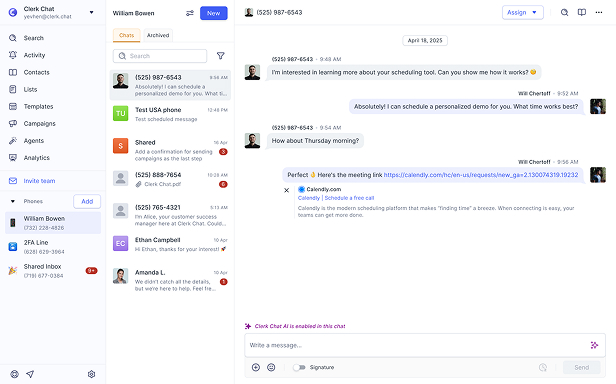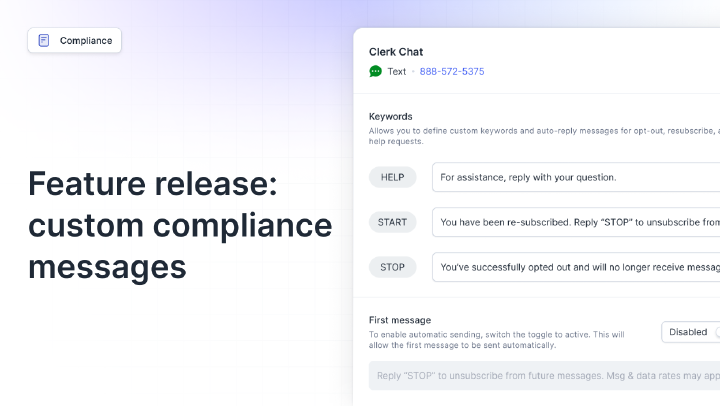SMS Carrier Lookup
[ɛs ɛm ɛs ˈkæriər ˈlʊkʌp]SMS carrier lookup identifies which mobile network operator currently services a specific phone number, enabling businesses to optimize message routing and improve delivery success rates. This technical service forms the backbone of efficient SMS infrastructure.
Why SMS Carrier Lookup Matters
SMS carrier lookup directly impacts message deliverability and operational costs in business messaging. Different carriers have varying delivery routes, spam filters, and technical requirements. By identifying the carrier before sending, businesses can select optimal routing paths that bypass common delivery issues. This pre-send intelligence reduces failed messages, saving money on undelivered SMS attempts while improving customer experience through reliable communication.
The financial impact extends beyond basic delivery improvements. Carriers charge different rates for message termination, and some offer volume discounts for direct connections. Businesses sending over 10,000 messages monthly often see 15-30% cost reductions by routing messages through carrier-specific channels identified via lookup services. Additionally, knowing carrier information helps identify prepaid versus postpaid numbers, allowing businesses to adjust messaging strategies for different customer segments.
Carrier lookup also enhances compliance and fraud prevention efforts. Identifying carrier patterns helps detect potentially fraudulent numbers before sending sensitive information. For regulated industries, carrier data provides audit trails demonstrating due diligence in message delivery. This verification layer becomes increasingly important as carriers tighten spam controls and require more sophisticated sending practices from businesses.
How SMS Carrier Lookup Works
The SMS carrier lookup process involves several technical steps that occur in milliseconds:
Number Normalization: The system formats the phone number into E.164 international format (+1234567890), removing special characters and standardizing country codes. This ensures consistent lookup results regardless of input format.
Database Query: The lookup service queries multiple data sources, including Mobile Number Portability (MNP) databases, carrier interconnection records, and real-time network queries. Primary lookups check static databases updated daily or weekly.
Portability Check: Since users can switch carriers while keeping their numbers, the system verifies current carrier assignment through MNP databases. This step catches the 20-30% of numbers that have been ported between carriers.
Response Parsing: The service returns carrier information including Mobile Country Code (MCC), Mobile Network Code (MNC), carrier name, network type (GSM/CDMA), and whether the number is mobile or landline. Advanced lookups may include roaming status and presence information.
Caching Logic: Results are cached with intelligent expiration based on carrier and region. Stable markets might cache for 48-72 hours, while high-portability regions require more frequent updates. Cache hit rates typically exceed 80% for regular communication patterns.
Fallback Handling: When lookups fail or return ambiguous results, the system implements fallback strategies. These include using last known carrier information, defaulting to major carrier routes, or triggering alternative lookup methods.
The entire process completes in 50-200 milliseconds for real-time lookups, or processes thousands of numbers per second in batch mode.
Best Practices with SMS Carrier Lookup
Implement Smart Caching - Cache carrier lookup results for 24-48 hours for frequently messaged numbers. Use shorter cache periods (6-12 hours) for new numbers or regions with high portability. Monitor cache hit rates and adjust timing based on accuracy requirements versus cost constraints.
Batch Process When Possible - Group lookup requests for non-urgent messaging campaigns to leverage bulk pricing. Schedule batch lookups during off-peak hours for better rates and faster processing. Separate real-time lookups for transactional messages from batch lookups for marketing campaigns.
Handle Edge Cases Gracefully - Develop fallback routing for unknown carriers or failed lookups. Create carrier mapping tables for regional operators not recognized by primary lookup services. Implement retry logic with exponential backoff for temporary lookup failures.
Monitor Lookup Accuracy - Compare lookup results against actual delivery reports weekly. Track discrepancy patterns by carrier and region to identify database quality issues. Switch providers or supplement with additional sources when accuracy drops below 95%.
Optimize API Integration - Use asynchronous lookup calls to prevent blocking message sends. Implement connection pooling and request queuing for high-volume periods. Set appropriate timeouts (typically 2-5 seconds) to prevent hung requests from impacting message flow.
Maintain Compliance Records - Log all lookup requests and results for audit trails. Store carrier information with message records for troubleshooting delivery issues. Ensure lookup data retention aligns with regional telecommunication regulations.
Cost Management Strategies - Negotiate volume commitments for better per-lookup pricing. Use free lookup tiers for testing and development environments. Implement lookup budgets with alerts to prevent unexpected overages during traffic spikes.
Real world examples
Common misconceptions
Small businesses benefit from carrier lookup to improve delivery rates and reduce costs
Carrier lookup only identifies the network operator, not personal user information
Accuracy varies significantly between providers, ranging from 85% to 99% reliability
Number portability means carrier data changes frequently, requiring regular updates
Carrier lookup improves routing but doesn't guarantee delivery due to other factors
Related terms
In this article:
Ready to use your business number for text messaging?
Thousands of businesses are already experiencing the power of conversational messaging through SMS. Join us. Free trial and paid tiers available.
Get StartedFAQ
Have questions? We've got answers.
Find what you need quickly and clearly with our most frequently asked questions.
SMS carrier lookup is a service that identifies which mobile network operator (carrier) currently services a phone number. Businesses need this information to optimize message routing, improve delivery rates, and reduce costs. By knowing the carrier, companies can select the most reliable routes, avoid carrier-specific filtering issues, and comply with carrier requirements. This technology becomes especially valuable for high-volume messaging where even small improvements in delivery rates significantly impact ROI.
Implementation typically involves integrating a carrier lookup API into your messaging workflow. First, select a reliable lookup provider offering real-time or batch processing options. Call the API before sending messages to retrieve carrier information, then use this data to route messages appropriately. Most providers offer REST APIs with simple HTTP requests. Cache results for 24-48 hours to reduce API calls while maintaining accuracy. Consider implementing fallback routing when carrier information is unavailable.
Carrier lookup services typically charge $0.001-0.005 per lookup for real-time queries, with volume discounts starting at 100,000 lookups monthly. Batch processing often costs 30-50% less than real-time lookups. Some providers offer subscription models ranging from $99-999/month including a set number of lookups. Database licensing for offline lookups runs $5,000-50,000 annually. Calculate ROI by comparing lookup costs against improved delivery rates and reduced messaging fees.
SMS carrier lookup focuses specifically on identifying the current carrier for routing optimization, while HLR (Home Location Register) lookup provides broader information including number validity, roaming status, and network availability. HLR lookups cost 5-10x more but offer real-time accuracy and additional data points. SMS carrier lookup suffices for most business messaging needs, while HLR becomes valuable for critical communications, fraud prevention, and international messaging requiring roaming detection.
Carrier lookup services must comply with telecommunications regulations and data protection laws. The lookup process only reveals network operator information, not personal data, making it generally compliant with privacy regulations. However, storing lookup results requires appropriate data handling practices under GDPR and similar laws. Ensure your provider maintains SOC 2 compliance and processes data within acceptable jurisdictions. Document lookup usage for audit trails and implement access controls for carrier data.
Improve accuracy by using providers with direct carrier connections and frequent database updates. Implement intelligent caching strategies, refreshing data every 24-48 hours for active numbers. Set up fallback mechanisms when lookups fail or return unknown carriers. Monitor lookup success rates and investigate patterns in failed lookups. Batch process during off-peak hours for better rates. Validate number formats before lookup to avoid wasting queries on invalid numbers. Regular accuracy audits comparing lookup results with actual delivery reports help identify provider quality.




